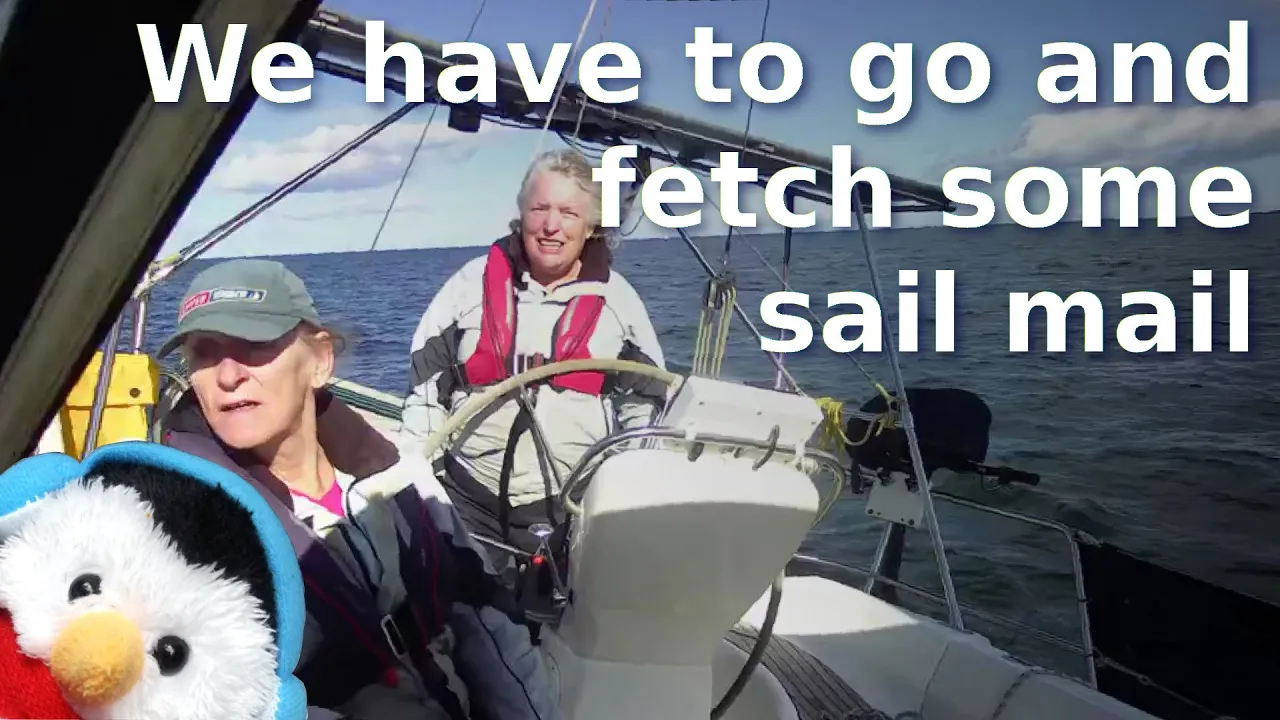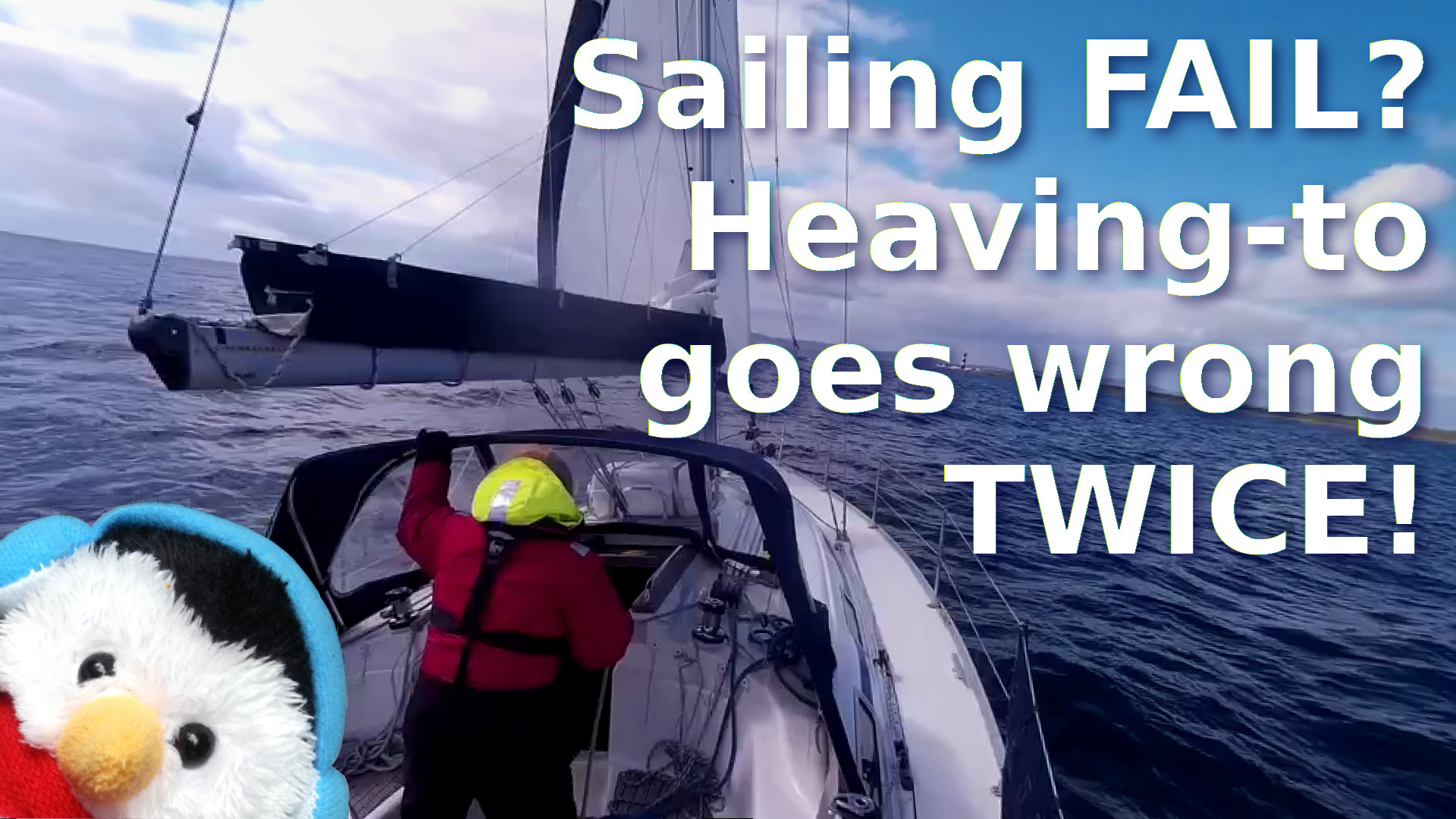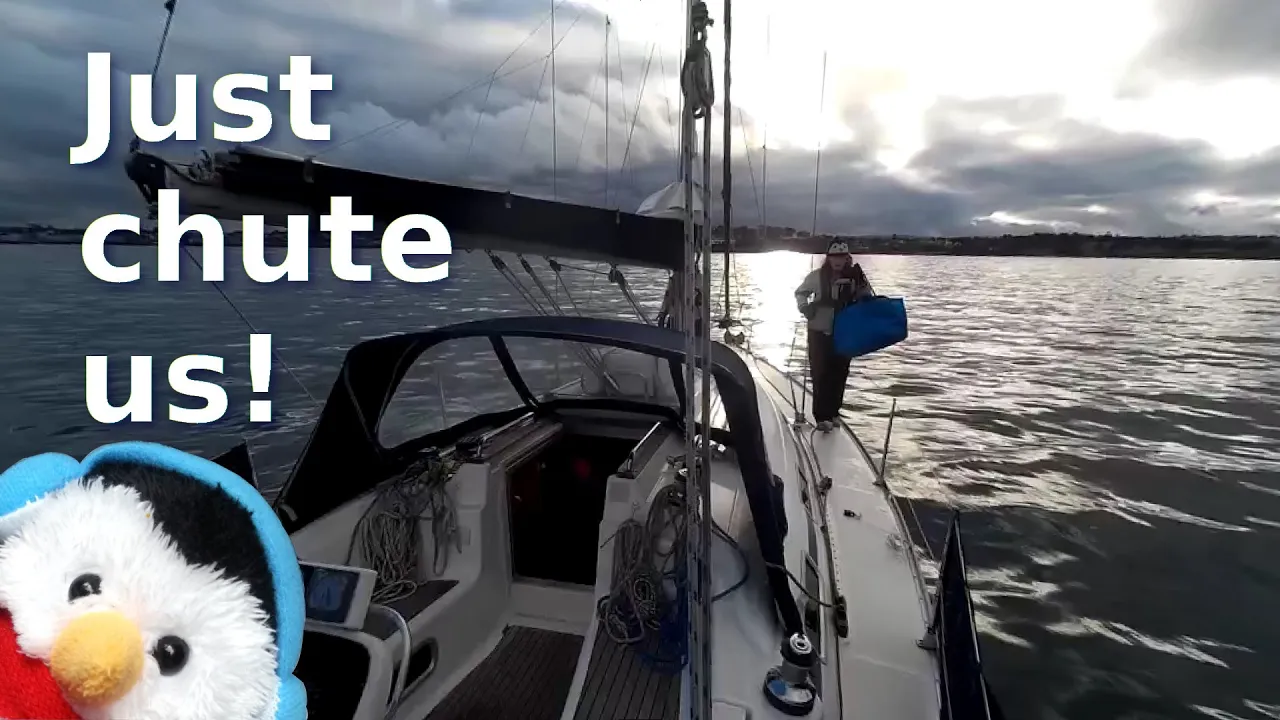We have been working so hard to get Salty Lass ready for sailing. It is amazing the amount of work that needs to be completed to get a boat ready, servicing the engine, and making repairs where we need to, in fact our last six blogs have been about the tasks we have needed to complete to get Salty Lass ready. Its amazing the amount of work that needs to be done, but we film reality, not fantasy, one day it will seem like we are in a fantasy, but we want to show you the hard work that is needed to get there. However, we had completed the tasks we had set ourselves. The engine was serviced and everything was away. We just needed to complete the last few tidy up jobs of converting Salty Lass from working mode to sailing mode. So that means putting the computers away and storing everything in a cupboard.
Upstairs on deck Beverley struggled with putting the life lines on, they had been in the locker for four months so they loosen up, so Beverley started by sweating the lines, but when that didn't quite work, she attached the line she was using to stretch the dyneema to a winch and stretched them that way. Meanwhile downstairs I had loads of stuff to store, including our de-humidifier, but the good old bungee cord came to the rescue with that small issue. The rest of our stuff all has a place, it was just a case of finally putting them all away.
While I was doing the engine checks, I shared with our viewers one of the comments that our subscribers made and that was about the fact that he had shredded his impeller because he didn't have any water going around his impeller. So the best solution to avoid that is to start the engine on a regular basis. It is only when you have any doubts with the engine starting should you consider starting with the seacock closed, or maybe start the engine with the seacock open and if it fails to start close the seacock to avoid hydro-locking the engine, but I reckon you need a few starting failure before then, but what number is a few, is a really trick call to make. Like all these things, you have got to make the right call for your boat and your situation, but if I was giving advice then it would be.
- Start the engine on a regular basis, at least once a month, with every week being preferred
- If you have to leave it for a long time, hand crank the engine to make sure that the oil is flowing in the engine then open the seacock
- If for some reason your engine fails to start, then close the seacock to avoid hydro-locking your engine.
- Also think if there are any other issues like an issue with the fuel system or you have a faulty starter motor, or you have a problem with your battery, there are lots of things that could go wrong, which is why Beverley and I have gone from zero knowledge to knowing quite a bit. Its just one of the many things that we have had to learn about as we continue on with our crazy adventures.
Eventually everything was done and it was time to slip the lines and get out into the lock. Hoisting the sails for the first time felt so good, we got so much wrong though, from me dropping the topping lift when I was told not to, and Beverley going the wrong way while I was hoisting the sail, so that the batons were clashing with the lazy jacks. Talk about rusty sailors. it was ridiculous.
Soon the sails were up and our little engine was off. I love the silence, there is something truly blissful about sailing along with the engine off. It is at moment like this that I think back on all the work we have done and declare that it was worth it. It might only be a few hours of pleasure, but the serenity, is fantastic. We had decided to sail with just our third reef in, this was so that we could get our sea legs but it was also so that we could check the setting of our third reef. To say that I was happy with the setting of our third reef now is an understatement. Our third reef looks fantastic, before the sail foot was always baggy, while now our third reef looks solid, it is amazing what adding a third hole in our sail bag has done to the shape of the sail. It might of taken me ages to do, but I can feel proud of the result.
The other task that we wanted to do was check the Genoa, I had added sail tape to some sections of the sail as well as stitching quite a lot of the bolt rope to the sail, so I had just wanted to check that under load, so we dropped the main and furled the Genoa all the way out. Once that was done I could go forward and check everything. It looked really good, we just need to raise the sail a little bit.
So with the sails checked and the engine checked, it was time to go in for tea. If you ever want to see our home made docking stick in operation, then watch the video because it is a great example of how it all should be done.













